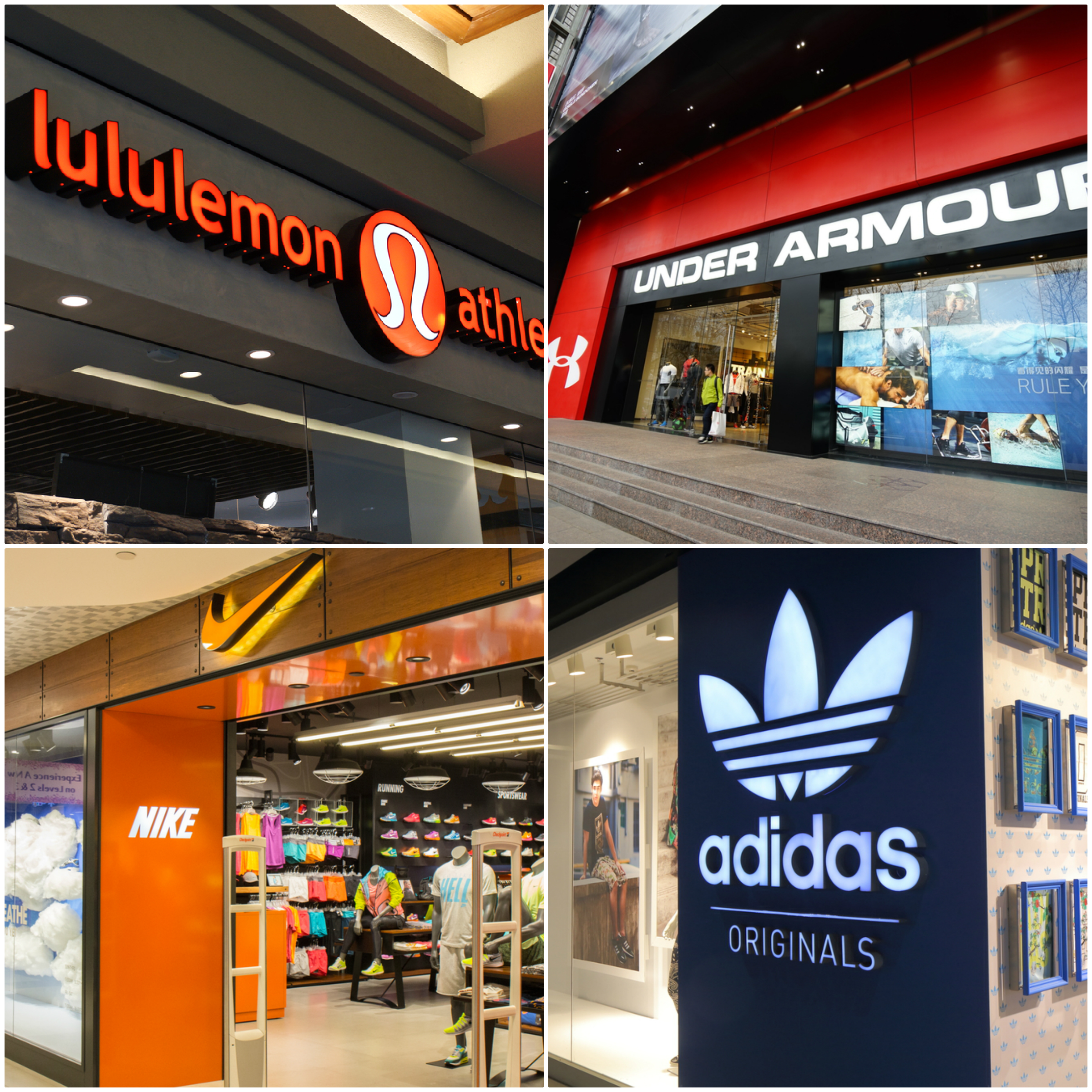Islamic modest sportswear gaining ground in a $151 bln market
The global sportswear apparel market was estimated at $151 billion in 2015, with a projected 4 percent per annum growth till 2020. With a clear need for modest clothing among active Muslim women and the emergence of several key players globally including Nashata, Ahiida, and more recently, Sefamerve and Veil Hijab, what are the opportunities for new players in the global modest sportswear industry?
| YOUR PAIN POINTS ADDRESSED | ASK YOURSELF | |
|
Scenario: You are looking to launch a global modest sportswear brand—how attractive is the opportunity? |
How attractive is the opportunity for a global modest sportswear brand? |
What are the size and growth dynamics of the sportswear market, and which are notable key players? |
| What is the potential opportunity for the Muslim market, and who are the notable players currently? | ||
| What are some of the key considerations for businesses trying to launch and scale a similar concept? | ||
HIGH-GROWTH SPORTSWEAR APPAREL MARKET
The global sportswear apparel market can be estimated at $151 billion in 2015, with growth projected at a cumulative annual growth rate (CAGR) of 4.3 percent to reach $184.6 billion in 2020, according to an Allied Market Research report on world sports apparel. North America currently accounts for the largest share of the market but it will be overtaken by Asia Pacific, says the report, which will race forward to grab the largest share by 2018.
The key players include Nike, Adidas (including Reebok), Puma, Under Armour, and Lululemon.
THE CRUCIAL WOMEN'S APPAREL MARKET
Projected growth in the industry is driven by emerging markets and an increased focus on female consumers in particular.
Big global brands such as Nike and Adidas, as well as smaller but fast-growing rivals Under Armour and Lululemon all take their women’s businesses very seriously.
Nike’s overall women’s business outpaces its men’s segment in terms of growth, the company told Fortune magazine in October 2014. Nike president Trevor Edwards told Business of Fashion in January last year the company’s women’s business is worth $5 billion, accounting for around 20 percent of total revenue. The global sportswear giant is aiming to push this upwards to $7 billion in 2017.
A smaller company such as Under Armour, which raked in $3.96 billion in revenue in 2015, was estimated to earn around $600 million from its women’s segment in 2014, according to Business Insider last month. Under Armour is investing heavily in women’s apparel and has pulled in celebrity names such as supermodel Gisele Bundchen as a spokesmodel.
EMERGING LANDSCAPE FOR MODEST SPORTSWEAR
As more and more Muslim women actively participate in sporting activities, the demand for Islamic modest sportswear and swimming attire is growing. These are product segments that have largely been overlooked by established market players in the global sportswear industry.
The largely unmet demand for Islamic modest sportswear has resulted in the emergence of several regionally focused specialty brands. Nine key modest sports-focused brands were identified in a special “Modest Fashion Ecommerce Report” in the State of the Global Islamic Economy Report 2014/15.
The top brand, by total web traffic, was Malaysia-based Nashata, which is also featured in the top 25 modest fashion e-commerce sites. Founded in 2013, the Nashata brand produces a full range of modest activewear, including hijabs for sports, full suits for activity and for swimming, and a comfort range for non-competitive activity. Nashata’s products can be delivered worldwide, and the company is gaining a steady social media following with over 14,000 likes on its Facebook page already.
Other key brands identified include Capsters (Netherlands), Friniggi (Botswana), ResportOn, and Queendom Hijabs (both Canada).
Australia’s Ahiida is the first modest swimwear brand. It was founded by Aheda Zanetti, who in 2004 came up with the Burqini to fit her sportswear needs. Zanetti’s products have been worn by women in the Olympics, Asian Games, and other major international athletic events.
Other sites that specialize in modest swimwear include Al Sharifa (United States), Modestly Active (United Kingdom), and Madamme BK (France).


Photo: (L) Capsters / Copyright Peter Stigter www.fashiontalk.nl; (R) Adlina Anis's 'Ninja Echo' / Courtesy Adlina Anis
NEWER PLAYERS
New players have entered the modest sportswear market with innovative new products.
Turkey-based Sefamerve is one such company. In a 2015 interview with DinarStandard, CEO Oya Okur Erciyes said, “We saw a real need … our sisters were suffering when they wanted to engage in sports with their husbands … So, our R&D and design team have developed sweat suits without compromising on Islamic principles. Now, even the female basketball team players wear our modest sport suits in Saudi Arabia, and we have been [the] clothing sponsor of three Muslim sportswomen for [the] Rio 2016 Olympics.”
Veil Hijab, a modest athletic apparel start-up, raised almost $40,000 on crowdfunding site Kickstarter in 2015. The company makes what it claims to be the world’s first ever “climate-adapting hijab” that features repellency technology and stain management. Its focus, as mentioned on the Kickstarter campaign site, is to provide “halal variations on contemporary ‘sports-luxe’ or ‘athleisure’ trends’.

Veil Hijab's 'Cool Dry' / Courtesy Veil Hijab
CHALLENGES AND CONSIDERATIONS
There are a number of challenges and considerations for potential market entrants that want to address the modest sportswear opportunity.
Sportswear is more focused and carries higher risk than modest fashion
As a broader industry, modest fashion is attracting attention from mainstream fashion industry players, including Dolce & Gabbana, DKNY, Mango, Tommy Hilfiger, and retailers H&M and John Lewis.
However, sportswear is much more focused and presents a smaller opportunity. Gaining scale in modest sportswear is much harder.
Fatima Fakier, Director of Botswana-based Friniggi, commented on this challenge in a 2015 interview with Salaam Gateway: “Finding the overlap in the market of the consumer who practises Islamic modesty and participates in sports was the key for our brand. This required precision focus on the target market and their specific needs, which is not found anywhere else in the wider Muslim market. This strategy has resulted in attracting customers who seek Islamic sportswear, and not merely modest sportswear, which encompasses a wide range of modest clothing that may not meet their dress code requirements.”
Innovation is a key step to differentiation and securing loyal customers
Islamic modest fashion and modest sportswear needs are uniquely different from conventional fashion and sportswear and at this nascent stage of the industry, innovation to adapt sportswear and fabrics to suit modesty needs is paramount.
Recent examples of innovation are Veil Hijab’s climate-adjusting hijab and designer Adlina Anis’s recent earphone-friendly hijab line, Ninja Echo.
In a 2015 interview with DinarStandard, Derya Seyhan Kaya, Head of Marketing and PR at Turkish fashion e-commerce site Kayra, commented on the need for innovation with reference to the Turkish market, “This sector is evolving absolutely by innovation. Because there were only three products in the market 10 years ago, [namely] chador, overcoats, and long skirts. But now, you can adapt everything [in modest clothing to any social situation], from stylish abaya concepts to beach clothing.”
Start with the local market before going global
Every market has different nuances, requiring careful investigation to understand differences between customer requirements. Commenting on the need to understand local markets in a 2015 interview with DinarStandard, Kerim Ture, CEO of Modanisa, said, “We need to ‘think local’ for every market in a fast-changing fashion environment. It is the stumbling block of developing branded global concepts.”
| RECOMMENDED ROADMAP |
| Do your homework on the market: Understand exactly what the customer needs. |
| Incorporate innovation into your processes: Seek to understand which needs are currently not addressed and develop new products to gain a distinct advantage in your product offering. |
| Understand the differences between various markets: Put together an expansion plan that is rooted on market research by key country—don’t assume all target customers are homogenous across countries. |
© SalaamGateway.com 2016

Haroon Latif, Director, Strategic Insights, DinarStandard supported by Yasir Malik, Senior Analyst, DinarStandard